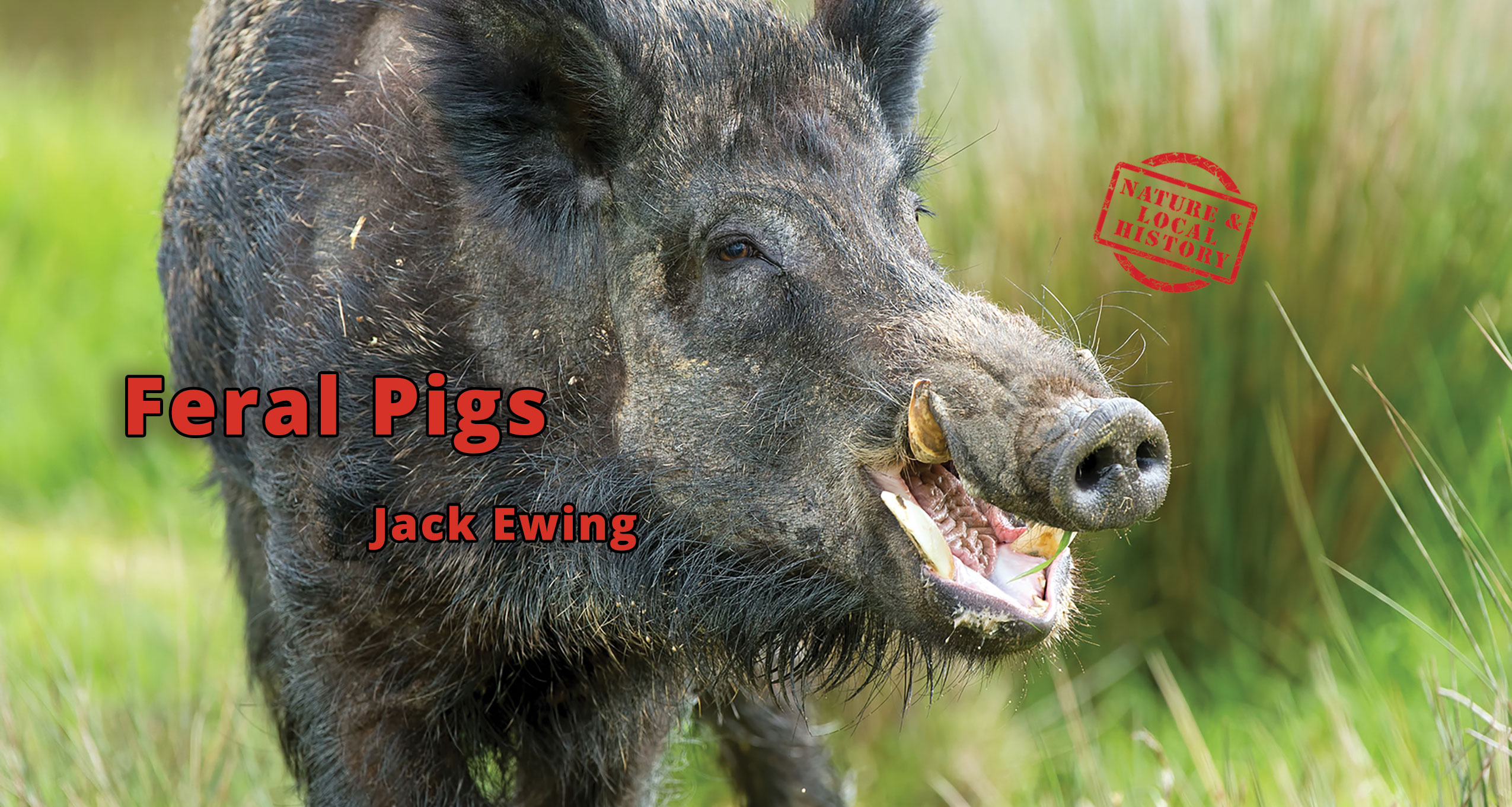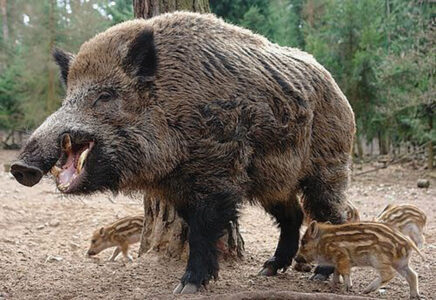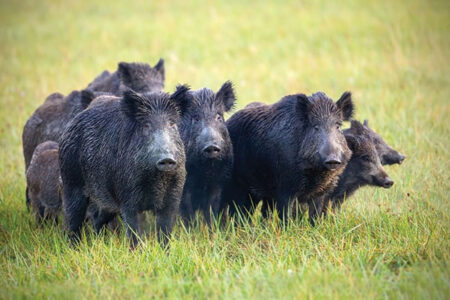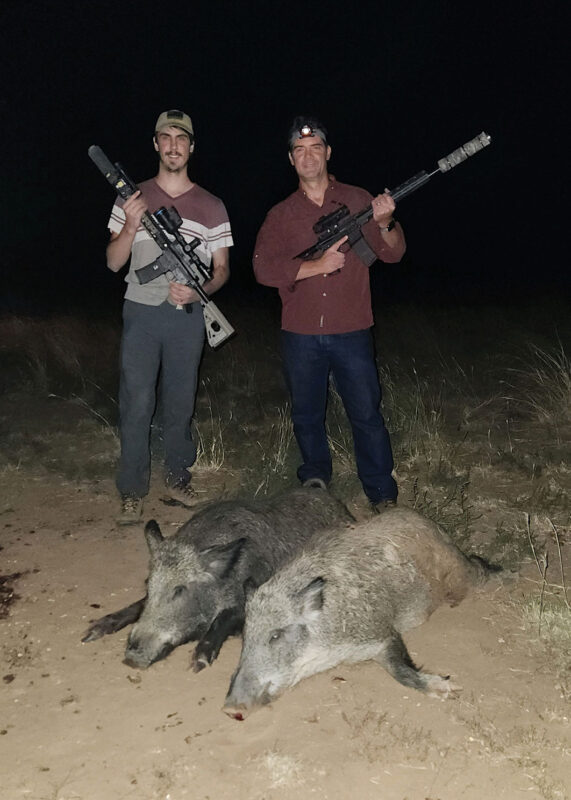Feral Pigs

Feral Pigs – Why Aren’t There Any on Mainland Costa Rica? by Jack Ewing
 In the mid-1980s I had the opportunity to visit Caño Island in a small and none too speedy boat. The trip from Drake Bay to the island took more than an hour. Capitan Felix, owner of the boat, was a talkative soul, and fortunately his chatter was not the least bit boring. We learned the story of the island which had, at one time, been plagued with feral pigs. In 1976 when the government created Caño Island Biological Reserve the wildlife department decided it was important to rid the reserve of the feral pigs. Capitan Felix was part of a group of four local hunters who had been contracted to hunt the pigs down and kill them. They assumed that hunting feral swine would be like hunting peccary on the mainland, but then they found out that the wildlife department wouldn’t let them bring their dogs into the reserve. Their only alternative was to walk the length and breadth of the island repeatedly and shoot every feral hog they saw until none remained.
In the mid-1980s I had the opportunity to visit Caño Island in a small and none too speedy boat. The trip from Drake Bay to the island took more than an hour. Capitan Felix, owner of the boat, was a talkative soul, and fortunately his chatter was not the least bit boring. We learned the story of the island which had, at one time, been plagued with feral pigs. In 1976 when the government created Caño Island Biological Reserve the wildlife department decided it was important to rid the reserve of the feral pigs. Capitan Felix was part of a group of four local hunters who had been contracted to hunt the pigs down and kill them. They assumed that hunting feral swine would be like hunting peccary on the mainland, but then they found out that the wildlife department wouldn’t let them bring their dogs into the reserve. Their only alternative was to walk the length and breadth of the island repeatedly and shoot every feral hog they saw until none remained.
Official estimates were that 40 to 50 of the pigs wandered over the 3.26 square kilometers of land area which comprised Caño Island, and the hunters figured they could probably accomplish their task in a month. At first the killing went fast, five or six pigs a day, but within a week it slowed considerably, and the hunters were lucky to shoot one or two a day. There were days when they didn’t kill any. After a month there were only four feral pigs left, but they were the craftiest and quickest of the lot, and even catching a glimpse of them was difficult. One day the caretaker on the island found Capitan Felix by himself, sitting on a log taking a breather. “Listen ‘Capi’, You didn’t hear this from me”, he winked, “but next Wednesday both game wardens are taking some days off. They’ll be leaving the island and won’t return for eight days. I’ll be here alone. Do whatever you want to kill those last four pigs. It’s not my job to supervise your work”. Early Thursday morning the Capitan and one companion left in his boat at daybreak. At 9:30 they were back with four hunting dogs. By dusk Caño Island Biological Reserve was free of feral hogs. I never asked Felix what they did with the dead pigs, but I would guess that they ate their fill of pork, took some choice cuts home, and fed the rest to the sharks.
 Feral pigs were probably introduced to both Caño Island and Cocos Island at around the same time. Some sources say that pirates brought pigs and left them on the islands in hopes that they would reproduce and provide food for future visits. British and European explorers also sailed the Pacific during the seventeenth and eighteenth centuries, and they may very well have been the culprits who brought the pigs. The most reliable information comes from a genetic research study that claims that the 400 to 500 feral hogs on Cocos Island were descended from one pair of domestic pigs with genes from both Asian and European swine and that arrived in 1793. Regardless of how and when they got to the island, their presence is extremely detrimental to the ecosystem and eliminating them entirely would be next to impossible. Not only does Cocos Island have 10 times as many feral pigs as did Caño Island, but it has around 15 times more land area as well. Someone once suggested introducing several male jaguars on Cocos Island in hopes that they would kill all the pigs. Who knows? It might work, but I doubt it.
Feral pigs were probably introduced to both Caño Island and Cocos Island at around the same time. Some sources say that pirates brought pigs and left them on the islands in hopes that they would reproduce and provide food for future visits. British and European explorers also sailed the Pacific during the seventeenth and eighteenth centuries, and they may very well have been the culprits who brought the pigs. The most reliable information comes from a genetic research study that claims that the 400 to 500 feral hogs on Cocos Island were descended from one pair of domestic pigs with genes from both Asian and European swine and that arrived in 1793. Regardless of how and when they got to the island, their presence is extremely detrimental to the ecosystem and eliminating them entirely would be next to impossible. Not only does Cocos Island have 10 times as many feral pigs as did Caño Island, but it has around 15 times more land area as well. Someone once suggested introducing several male jaguars on Cocos Island in hopes that they would kill all the pigs. Who knows? It might work, but I doubt it.
Why are there no feral pigs on the Costa Rica mainland? They were surely introduced here, and are found at other mainland locations.

The United States Department of Agriculture estimates that there are seven million feral pigs in 35 states in the USA, and that they do about $2.5 billion dollars worth of damage annually, mainly to crops. $75 million has been budgeted to try to eliminate, or at least control, feral swine in certain target areas. Genetically these animals are slightly different from the Cocos Island feral pigs but are closely enough related that all have the same scientific name of Sus scrofa. Numerous common names such as: razorbacks, piney woods roosters, wild boar, feral hog, feral pig, wild swine, and others, all refer to the same species, although there may be differences in appearance. Three million feral pigs reside in the state of Texas, and some of these are crossed with European wild boar that were imported by sportsmen for private hunting reserves and escaped. All the different varieties do massive amounts of damage to many different crops. Hunting season on feral hogs is wide open in the state, no license required, and no bag limit. Kill all you want, the more the better. Nevertheless, sportsmen haven’t even put a dent in the population.
Now here is the conundrum: There are lots of feral hogs on Cocos Island, there used to be on Caño Island, and North America has an enormous problem with them. Why aren’t there any on mainland Costa Rica. You may say that predators like jaguars eat them. Yet in 2018 I had the good fortune to visit Pantanal National Park in Brazil. In spite of the fact that Pantanal has the highest density of jaguars of any place in the world, we saw feral hogs in the park. I don’t have the answer, but I love pondering Mother Nature’s brainteasers. If any of you readers have an idea, I would love to hear it. My own guess is that the few feral pigs that may have been introduced onto the mainland were killed by people and used to make tamales.
Jack Ewing was born and educated in Colorado. In 1970 he and his wife Diane moved to the jungles of Costa Rica where they raised two children, Natalie and Chris. A newfound fascination with the rainforest was responsible for his transformation from cattle rancher into environmentalist and naturalist. His many years of living in the rainforest have rendered a multitude of personal experiences, many of which are recounted in his published collection of essays, Monkeys are Made of Chocolate. His latest book is, Where Jaguars & Tapirs Once Roamed: Ever-evolving Costa Rica.
